Streamline your path to FAA Part 145 Repair Station Certification.
Key Requirements for Obtaining FAA Part 145 Repair Station Certification
The Federal Aviation Administration (FAA) Part 145 Repair Station Certification is a crucial step for any organization looking to provide maintenance, repair, and overhaul services for aircraft. This certification ensures that the repair station meets the FAA’s stringent safety and quality standards. To obtain this certification, there are several key requirements that must be met.
First and foremost, the repair station must have a fixed location. This means that it cannot be a mobile or transient operation. The FAA requires that the repair station have a physical address where the maintenance and repair work will be conducted and/or the records will be kept. This ensures that the repair station has the necessary infrastructure and facilities to carry out its operations effectively.
In addition to having a fixed location, the repair station must also have the appropriate equipment and tools to perform the required maintenance and repair tasks. The FAA requires that the repair station have a comprehensive set of tools and equipment that are properly calibrated and maintained for the rating(s) they hold. This ensures that the repair station can carry out its work in a safe and efficient manner.
Another key requirement for obtaining FAA Part 145 Repair Station Certification is the presence of qualified personnel. The repair station must have a sufficient number of qualified and trained technicians who possess the necessary knowledge and skills to perform the required maintenance and repair tasks. These technicians must also hold the appropriate FAA certifications, i.e. repairman certificate and/or other licenses.
Furthermore, the repair station must have an approved training program in place. This program should provide initial and recurrent training to the technicians, ensuring that they stay up to date with the latest industry standards and best practices. The training program should cover a wide range of topics, including safety procedures, technical knowledge, and regulatory compliance.
In addition to these requirements, the repair station must also have an acceptable Repair Station Manual (RSM) and Quality Control Manual (QCM), which describe the procedures required by 14 CFR Part 145 and are acceptable quality control systems. This system should ensure that all maintenance and repair work is carried out in accordance with the FAA’s regulations and standards. It should include processes for inspecting and testing the work performed, as well as procedures for addressing any non-compliance issues that may arise.
To demonstrate compliance with these requirements, the repair station must undergo a thorough inspection by the FAA. This inspection will assess the repair station’s facilities, equipment, personnel, training program, and quality control system. The FAA inspector will review documentation, conduct interviews, and perform on-site inspections to ensure that all requirements are met.
Once the repair station has successfully met all the requirements and passed the inspection, it will be granted FAA Part 145 Repair Station Certification.
In conclusion, obtaining FAA Part 145 Repair Station Certification requires meeting several key requirements. These include having a fixed location, possessing the necessary equipment and tools, employing qualified personnel, implementing an approved training program, and having a robust quality control system. By meeting these requirements and successfully passing the FAA inspection, a repair station can demonstrate its commitment to safety and quality in aircraft maintenance and repair.
Common Challenges and Tips for Successful FAA Part 145 Repair Station Certification

The FAA Part 145 Repair Station Certification process can be a complex and challenging endeavor for aviation maintenance organizations. However, with careful planning and attention to detail, it is possible to navigate this process successfully. In this article, we will discuss some common challenges that organizations may face during the certification process and provide tips for achieving a successful outcome.
One of the most common challenges that organizations encounter is understanding the regulatory requirements set forth by the FAA. The regulations governing Part 145 Repair Station Certification are extensive and can be difficult to interpret. It is crucial for organizations to thoroughly review and understand these regulations before embarking on the certification process. This includes familiarizing themselves with the FAA’s Advisory Circulars and other guidance materials that provide additional clarification on the requirements.
Another challenge that organizations often face is developing and implementing the necessary policies and procedures to meet the FAA’s standards. The FAA requires repair stations to have documented processes in place for various aspects of their operations, including quality control, maintenance, and training. Developing these policies and procedures can be time-consuming and requires a thorough understanding of the FAA’s expectations. It is important for organizations to allocate sufficient resources and personnel to this task to ensure that all requirements are met.
Additionally, organizations may struggle with gathering the necessary documentation to support their application for certification. The FAA requires repair stations to provide evidence of compliance with the regulatory requirements, including records of training, maintenance procedures, and quality control processes. Gathering and organizing this documentation can be a daunting task, especially for organizations that have not previously maintained comprehensive records. It is essential for organizations to establish a system for record-keeping and ensure that all required documentation is readily accessible.
During the certification process, organizations may also face challenges related to the physical inspection of their facilities and equipment by FAA inspectors. The FAA requires repair stations to have adequate facilities, equipment, and personnel to perform their maintenance activities. Inspectors will thoroughly evaluate these aspects of the organization during the certification process. It is important for organizations to ensure that their facilities and equipment are in compliance with the FAA’s requirements and that any deficiencies are addressed prior to the inspection.
To overcome these challenges and achieve a successful outcome, organizations should consider several tips. First, it is crucial to establish a clear timeline and allocate sufficient resources for the certification process. This includes assigning personnel to oversee the process and ensuring that they have the necessary knowledge and expertise to navigate the requirements.
Second, organizations should consider seeking assistance from experienced aviation consultants or industry experts who have experience with the Part 145 Repair Station Certification process. These individuals can provide guidance and support throughout the process, helping organizations to avoid common pitfalls and ensure compliance with the FAA’s requirements.
Finally, organizations should maintain open lines of communication with the FAA throughout the certification process. This includes promptly addressing any questions or concerns raised by FAA inspectors and providing any requested documentation in a timely manner. By maintaining a positive and cooperative relationship with the FAA, organizations can increase their chances of a successful certification outcome.
In conclusion, the FAA Part 145 Repair Station Certification process can be challenging, but with careful planning and attention to detail, organizations can achieve a successful outcome. By understanding the regulatory requirements, developing and implementing the necessary policies and procedures, gathering the required documentation, and addressing any deficiencies in facilities and equipment, organizations can navigate the certification process successfully. By following these tips and maintaining open lines of communication with the FAA, organizations can increase their chances of achieving and maintaining Part 145 Repair Station Certification.
Overview of FAA Part 145 Repair Station Certification Process
The FAA Part 145 Repair Station Certification Process is a crucial step for any organization seeking to provide maintenance and repair services for aircraft. This certification ensures that the repair station meets the high standards set by the Federal Aviation Administration (FAA) and is capable of maintaining the airworthiness of aircraft. In this article, we will provide an overview of the FAA Part 145 Repair Station Certification Process, outlining the key steps and requirements involved.
The first step in the certification process is the submission of an application to the FAA. This application includes detailed information about the repair station, such as its location, facilities, and the types of aircraft it intends to service. The FAA carefully reviews this application to ensure that the repair station meets the necessary criteria for certification.
Once the application is approved, the repair station must then develop and implement a quality control system. This system is designed to ensure that all maintenance and repair work is performed in accordance with the FAA regulations and industry best practices. The repair station must also designate a qualified individual to oversee the quality control system and ensure its effectiveness.
In addition to the quality control system, the repair station must also establish a training program for its employees. This program ensures that all personnel have the necessary knowledge and skills to perform their duties safely and effectively. The FAA requires that the training program covers a wide range of topics, including aircraft systems, maintenance procedures, and safety protocols.
Once the quality control system and training program are in place, the repair station must undergo an inspection by the FAA. This inspection is conducted by a team of FAA inspectors who thoroughly evaluate the repair station’s facilities, equipment, and procedures. The inspectors also review the repair station’s records to ensure that all maintenance and repair work has been properly documented.
If the repair station successfully passes the inspection, it is granted FAA Part 145 Repair Station Certification. The repair station is subject to periodic inspections by the FAA to ensure ongoing compliance.
It is important to note that the FAA Part 145 Repair Station Certification Process is not a one-time event. The repair station must continuously demonstrate its ability to meet the FAA’s standards through ongoing compliance and adherence to the regulations. Failure to do so can result in the revocation of the certification and the loss of the repair station’s ability to provide maintenance and repair services for aircraft.
In conclusion, the FAA Part 145 Repair Station Certification Process is a comprehensive and rigorous process that ensures repair stations meet the high standards set by the FAA. From the initial application to the ongoing compliance requirements, every step is designed to ensure that the repair station is capable of maintaining the airworthiness of aircraft. By obtaining this certification, repair stations demonstrate their commitment to safety and quality in the aviation industry.






